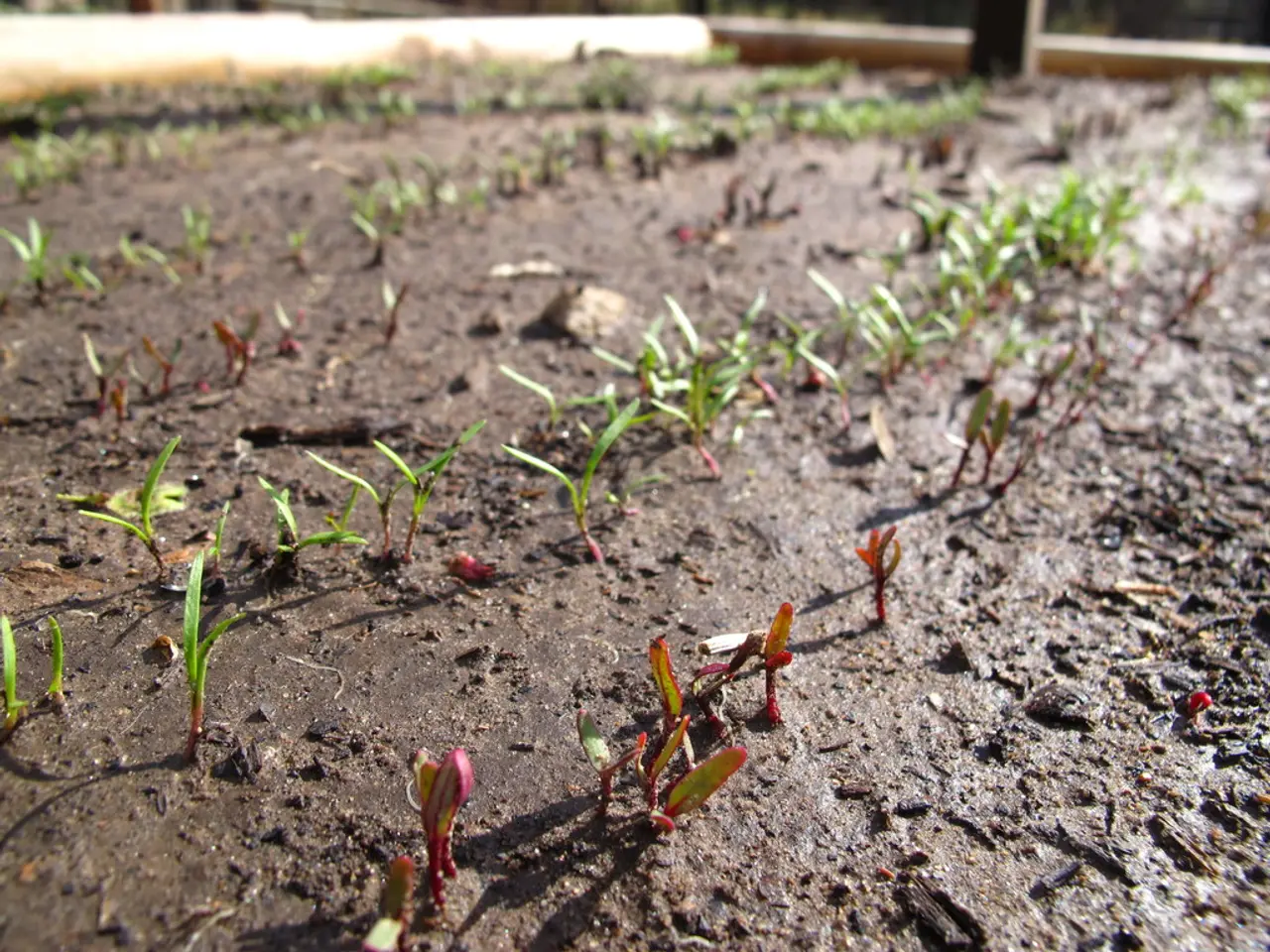Cultivating Luffa Gourds for Naturally Made Sponge Production
Growing Luffa Gourds: A Guide for Small Gardens and Greenhouses
Luffa gourds, known for their edible flesh and fibrous sponges, can thrive in a variety of settings, including small gardens and greenhouses. Here's a step-by-step guide to help you grow these versatile plants.
Preparing Seeds
To get started, germinate seeds indoors early. Luffa seeds are large and hard, so pre-scraping or clipping a small edge can help with moisture absorption and improve germination. Maintain warm temperatures consistently above 60-70°F (15-21°C) for seedling growth and throughout the growing period.
Growing Conditions
- Soil: Use fertile, well-draining soil rich in organic matter to support vigorous growth.
- Containers: Large pots or containers with good drainage work well for indoor cultivation and save space.
- Support Structure: Provide a trellis or vertical support inside the greenhouse to allow the vining luffa gourds to climb. This mimics natural outdoor growth and improves airflow, fruit shape, and color.
- Heat and Duration: Luffa plants need a long growing season of about 120 to 200 days of warm conditions to mature fully. A controlled environment like a greenhouse can extend the growing window.
- Light: Provide ample sunlight or supplemental grow lights for 6-8 hours daily, as luffa gourds require full sun exposure.
- Watering: Keep soil evenly moist but not waterlogged; overwatering can cause root issues.
- Harvest Timing: Harvest gourds when they turn yellow/brown; if frost or cold is expected, pick earlier but expect harder peeling.
Varieties
Some varieties like the Taiwanese Apple Luffa can be grown commercially in greenhouses on trellises and mature faster (45-60 days) after sowing, providing a viable option for small garden greenhouse cultivation.
Tips for Success
- Luffa plants need lots of water for growth and should be mulched well to retain moisture.
- Luffa gourds are ready to harvest when they turn yellow or brown, or if there's a chance of frost, pick them even if they're still green.
- Luffa plants need a lot of space and prefer a hot and sunny location.
- To grow luffa gourds, you'll need loofah gourd seeds, biodegradable pots, quality potting soil, and a seeding heat mat (optional).
- The first couple of lateral branches and the first few flowers should be removed to ensure a healthy plant.
- Luffa gourds can be eaten when harvested young, as they become fibrous when maturing and form the loofah sponge.
Recipes and Seed Sources
A video for luffa curry is available and looks delicious. If not properly stored, luffa gourd seeds can be obtained from one's own garden after the first crop, from a neighbour, seed exchange, or Amazon.
Adriana Copaceanu, a nature lover who grows vegetables, lavender, and wildflowers, and the author of "How to Grow Lavender for Fun and Profit" and "How to Raise Chickens for Eggs", is a great resource for further information on growing luffa gourds.
- In small gardens and greenhouses, you can grow Luffa gourds, known for their edible flesh and fibrous sponges.
- For successful seed germination, pre-scrape or clip a small edge of the large, hard Luffa seeds, and maintain warm temperatures consistently above 60-70°F (15-21°C).
- Using fertile, well-draining soil rich in organic matter and large pots or containers with good drainage can support Luffa plants in a greenhouse.
- A trellis or vertical support inside a greenhouse will help Luffa gourds climb and improve airflow, fruit shape, and color.
- Luffa plants require ample sunlight or supplemental grow lights for 6-8 hours daily and need to be kept evenly moist but not waterlogged.
- Some Luffa varieties, like the Taiwanese Apple Luffa, can be matured faster (45-60 days) in a greenhouse, reeling in the benefits of small garden greenhouse cultivation.




